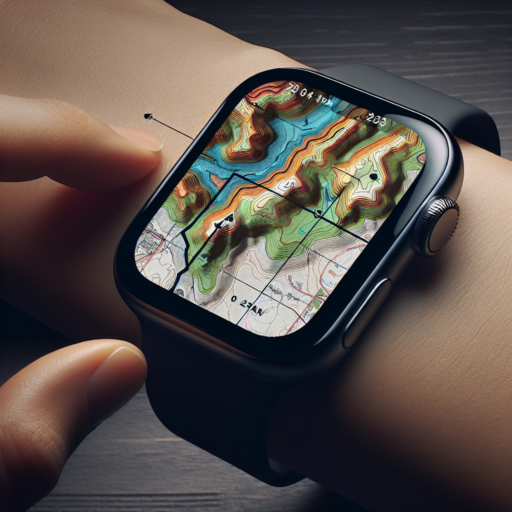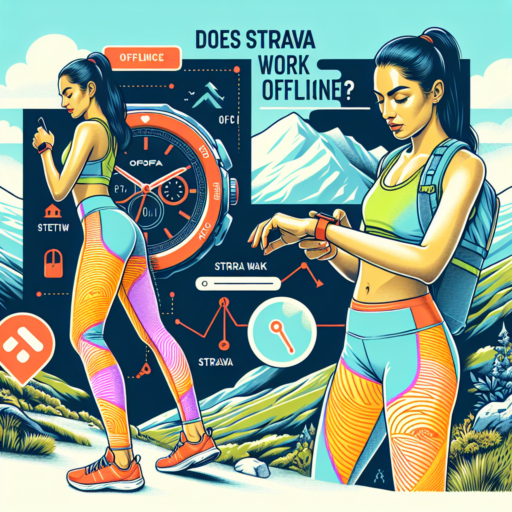Introduction to Finding Routes on Strava
Finding the perfect route for your next run, bike, or hike has never been easier thanks to Strava. With millions of active users, Strava is not just a tracking app; it’s a social network for athletes of all levels. This introduction will guide you through the basics of navigating the world of routes on Strava, ensuring you get the most out of your adventures.
Strava’s route finding feature is designed to help you discover new paths, save your favorite courses, and even explore routes created by other athletes in your area. Whether you’re looking to break your personal record or just in search of a leisurely path, Strava makes it easy to find exactly what you’re after. The platform’s user-friendly interface allows you to filter routes by distance, elevation, and terrain, helping you to tailor your search to your specific needs.
One of the unique aspects of finding routes on Strava is the community-driven recommendations. Users can share their experiences, tips, and photos, adding a social layer to route discovery. This peer-to-peer advice can be invaluable, offering insights into the real-world conditions of paths, popular local spots, and hidden gems you might not find anywhere else.
Step-by-Step Guide on How to Find Routes on Strava
Understanding the Basics of Strava Routes
Before diving into the specifics of finding routes on Strava, it’s essential to understand what makes this feature so appealing to fitness enthusiasts worldwide. Strava’s Route feature is not just about tracking your own path but also exploring paths shared by others in the community. This encourages users to discover new trails and challenges, optimizing their fitness journey.
Navigating Through the Strava App
Finding routes on Strava is a straightforward process once you familiarize yourself with the app’s interface. Start by opening the Strava app on your smartphone or accessing the website on a desktop. Look for the ‘Explore’ tab. Here, you’ll find the ‘Routes’ option, which is your gateway to a myriad of community-shared paths. Users can filter routes based on activity type, location, and length, making it easier to find options that best suit your workout preferences.
Utilizing Custom Search Features
For a more personalized experience, Strava offers advanced search functionalities. These allow users to specify criteria such as elevation gain, surface type (e.g., road, trail), and whether they prefer a loop or out-and-back route. By utilizing these filters, you can easily pinpoint routes that match your training requirements. Remember, experimenting with different filters can unveil hidden gems not immediately obvious in a general search.
Exploring the Benefits of Using Strava for Route Finding
Finding the perfect route for your next run or bike ride can be a game-changer for both your training regimen and your overall enjoyment of the activity. Strava, a popular fitness tracking app, offers a robust route finding feature that has won the hearts of outdoor enthusiasts worldwide. Let’s delve into the benefits of leveraging Strava for this purpose.
At its core, Strava’s route finding tool is designed with convenience and personalization in mind. Users can quickly discover new paths within their local area or explore routes in unfamiliar territories, all while being assured of their suitability for running or cycling. This ease of access to a global database of routes enriches the user experience, making every outing an opportunity for a new adventure.
Key Advantages of Using Strava for Route Discovery
- Comprehensive Filters: Strava allows users to apply filters based on distance, elevation gain, and surface type, enabling them to find the perfect route that aligns with their fitness goals and preferences.
- Community-Powered Recommendations: With millions of users worldwide, Strava’s route finding is enhanced by community recommendations and reviews. This social proof can guide users towards highly praised routes, ensuring a quality experience.
- Safety Features: Strava emphasizes user safety by highlighting well-traveled routes and providing detailed maps that include essential safety information, such as water refill stations and alerting users to high-traffic areas.
The integration of technology into fitness and outdoor activities has never been more seamless than with Strava’s route finding capabilities. By harnessing the power of community data and advanced filtering options, Strava not only helps users uncover new paths but also ensures these discoveries align with their individual training needs and safety considerations. Whether you’re a seasoned athlete or a casual enthusiast, Strava offers a tailored experience that enriches each journey.
Customizing Your Route Discoveries on Strava
Exploring unknown paths and tracking your progress has never been easier than it is with Strava’s route discovery features. Here’s how to personalize your adventures to make each run, ride, or hike as rewarding as possible. By understanding the various customization options available, you can tailor each journey to meet your specific fitness and exploration goals, ensuring every outing is a new adventure.
Setting Your Distance and Elevation Preferences
Start by adjusting your desired distance and elevation gain to match your current fitness level or training goals. Strava offers sliders in the route creation tool that allow users to fine-tune these parameters. This means whether you’re aiming for a gentle recovery ride or a challenging hill climb, you can customize your route accordingly to push your limits in a controlled manner.
Exploring Different Surface Types
For those who enjoy mixing up their training surfaces, Strava’s route discovery tools can filter paths based on surface type. From paved roads to dirt trails, you can select your preference to match the type of workout you’re seeking. This feature is especially beneficial for runners and cyclists who are looking to optimize their training by engaging different muscle groups or preparing for specific race conditions.
The Top Strava Routes for Cyclists and Runners
Discovering the best Strava routes is essential for athletes who desire to explore new challenges while tracking their performance. Whether you’re a cyclist or a runner, Strava’s community-driven approach has made it a go-to platform for finding scenic, challenging, and unique routes. In this guide, we spotlight top routes favored by both cyclists and runners, emphasizing variety and the thrill of exploration.
Scenic Routes for the Avid Explorer
For those who prioritize the beauty of their journey, certain Strava routes stand out for their breathtaking views and serene landscapes. Cyclists might gravitate towards routes that weave through majestic mountain ranges or along picturesque coastline paths. Runners, on the other hand, often find solace and inspiration in trails that cut through lush forests or around tranquil lakes. These scenic routes not only offer a feast for the eyes but also provide varying terrains that can help improve endurance and stamina.
Challenging Trails for the Endurance Seeker
Challenge-seekers, both from the cycling and running communities, constantly search for routes that push their limits. Steep inclines, rugged terrains, and long distances characterize the top Strava routes in this category. Engaging with these challenging trails allows athletes to test their mettle against the elements, improving their physical strength and mental resilience. It’s where personal bests are often shattered, and new goals are set, fostering a spirit of continuous improvement and perseverance.
How to Share and Save Your Favorite Routes on Strava
Sharing and saving your favorite routes on Strava not only allows you to keep a personal record of your preferred workouts but also lets you inspire your community by showcasing the paths you love the most. With Strava’s straightforward features, you can easily highlight the scenery, difficulty, and unique aspects of each route, making each of your adventures memorable and sharable.
Steps to Save Your Favorite Routes on Strava
To start, saving a route on Strava is a seamless process. Once you’ve completed a route that you’d like to save for future reference or share with the Strava community, simply:
- Navigate to the “Record” tab on the Strava app.
- Tap on the route map after completing your activity.
- Choose «Save Route» and give your route a memorable name and description.
Remember, adding a detailed description can help others understand why this route stands out, making it easier for them to follow in your footsteps.
How to Share Routes with Fellow Strava Users
Sharing your favorite routes enhances your Strava experience by connecting with others and encouraging them to try new paths. After saving a route:
- Go to the “My Routes” section on your profile.
- Select the route you wish to share.
- Click on the “Share” icon and choose how you’d like to share it; you can send it directly to friends, to your followers, or on social media.
Making your routes public or sharing them with select Strava members encourages community engagement and the discovery of new, exciting challenges.
Utilizing Strava’s Heatmap for Discovering Popular Routes
Strava’s Heatmap is a powerful tool for anyone interested in exploring the most popular routes for cycling and running around the world. This innovative feature aggregates millions of activities uploaded by Strava’s community to highlight the roads, trails, and paths most frequented by athletes. By leveraging the data visualized in the Heatmap, users can easily find new routes that match their fitness levels and preferences, ensuring a fresh and engaging experience every time they head out.
Personalizing Your Adventure with Strava’s Heatmap has never been easier. Users can adjust the heatmap’s settings to display activities specific to their interests, such as running, cycling, or swimming. This customization allows for a more targeted exploration of areas, helping users to discover hidden gems or popular local hotspots that correspond with their preferred activity type. Additionally, the Heatmap’s color coding provides insights into the intensity of traffic on various routes, enabling users to choose paths that suit their comfort level, whether they’re looking for a quiet jog or a bustling cycling route.
Strava’s Heatmap not only serves individual athletes but also benefits local communities and city planners. By analyzing the density and flow of activities in specific areas, it’s possible to identify where infrastructure improvements can enhance safety and accessibility for cyclists and runners. Consequently, the Heatmap acts as a bridge between the athletic community and urban development, highlighting areas in need of bike lanes, running tracks, or safer crossings.
Tips and Tricks for Efficient Route Finding on Strava
Discovering the most efficient routes on Strava not only saves time but can also enhance your workout experience. Whether you’re a seasoned athlete or a fitness enthusiast, mastering the art of route finding is key. Here we delve into practical tips and tricks to navigate through Strava more effectively, ensuring your workouts remain challenging and enjoyable.
Using the Segment Explorer
Strava’s Segment Explorer is an invaluable tool for finding new and efficient routes. By leveraging this feature, you can search for segments based on popularity or incline, allowing you to tailor your route according to your workout goals. Navigate through the explorer to find paths that align with your desired distance and intensity. Remember to check the leaderboards for segments, as they offer insight into the routes favored by local athletes, which are often the most rewarding and well-trodden paths.
Customizing Routes with Personal Heatmaps
Your personal heatmap on Strava is a goldmine for uncovering efficient routes you’ve previously taken. It visualizes your most frequented paths, highlighting opportunities to explore new areas or optimize current routes. By examining your heatmap, you can easily identify which segments you frequent and plan alternative paths to add variety to your workouts. Combining your heatmap with the Route Builder tool allows for a customized route planning experience, ensuring your paths are both efficient and aligned with your training needs.
Embracing these strategies not only makes route finding on Strava more efficient but also adds an element of fun and exploration to your workouts. By understanding and utilizing features like the Segment Explorer and personal heatmaps, you can unlock new opportunities for exercise and adventure, all while ensuring your routes are optimized for your fitness journey.
How to Use Strava Routes to Improve Your Training
Strava, a popular network for tracking cycling and running exercises, has become an indispensable tool for athletes aiming to improve their training regimen. Utilizing Strava Routes effectively can transform your ordinary training sessions into a tailored, data-driven experience that fosters improvement and motivation.
Creating Personalized Routes: Strava offers the ability to create bespoke routes that align with your training goals. By analyzing previous workouts, you can identify areas for improvement and design routes that challenge your endurance, speed, or elevation gain. This targeted approach ensures that every session is a step towards your larger objectives, making your training more efficient and goal-oriented.
Discovering New Routes: Apart from personal creation, Strava’s global community offers a treasure trove of routes shared by fellow athletes. Exploring these routes can inject variety into your regimen, keeping your training exciting and engaging. Variety is crucial in avoiding plateauing and maintaining a high level of motivation. By regularly incorporating new challenges, you ensure continuous improvement and adaptation.
Leveraging Strava’s Features: Strava isn’t just about tracking; it’s about analyzing and optimizing. The platform’s features, such as segment leaderboards, personal heatmaps, and performance analysis, provide insightful feedback on your progress. By understanding your performance on specific segments of your routes, you can pinpoint weaknesses and tailor your training to address them. Additionally, setting goals for segments and tracking your improvement over time can offer a tangible measure of your progress.
No se han encontrado productos.
Conclusion: Enhancing Your Outdoor Activities with Strava Routes
Incorporating Strava Routes into your outdoor activities can dramatically enhance your exercise experience, offering a fresh perspective on your fitness journey. By leveraging this powerful feature, users gain access to a vast array of routes, ensuring that every run, ride, or hike is not just a form of physical activity, but a new adventure. The tool’s ability to analyze your performance and suggest routes tailored to your fitness level makes it an invaluable companion for both novices and seasoned athletes alike.
The community aspect of Strava Routes further amplifies its benefits. Sharing your favorite routes and participating in challenges adds a social dimension to your workouts that can motivate you to push your limits. It’s this combination of personalization and community support that makes Strava Routes stand out as a key tool in enhancing your outdoor activities. Whether you are looking to break your personal record or find new scenic paths, Strava Routes can guide you towards your goals.
Moreover, the safety features included in Strava Routes, such as route popularity to guide you through well-traveled paths and the option to share your live location with friends and family, ensure that adventurers can explore new terrains with confidence. These functionalities not only enhance the user’s experience but also bring peace of mind to both the users and their loved ones, making outdoor activities more enjoyable and secure.




